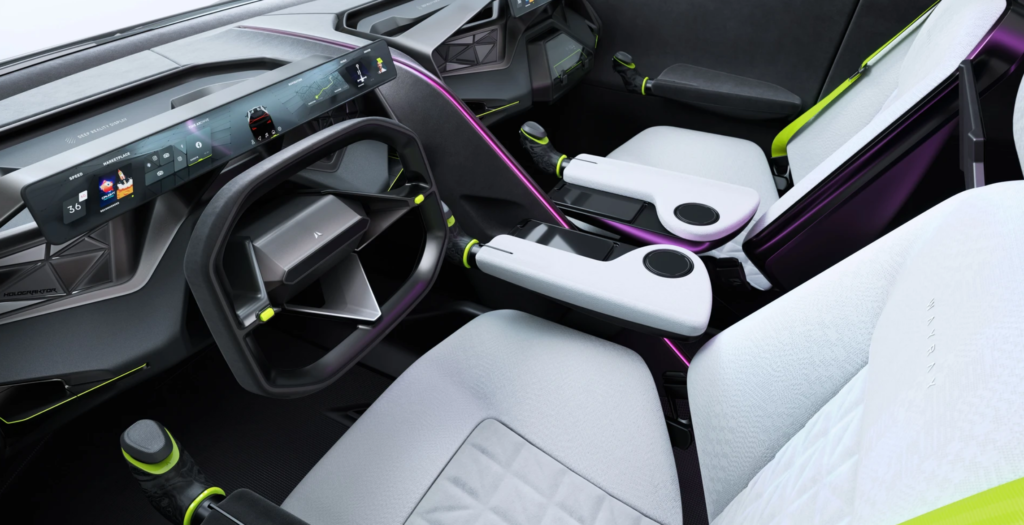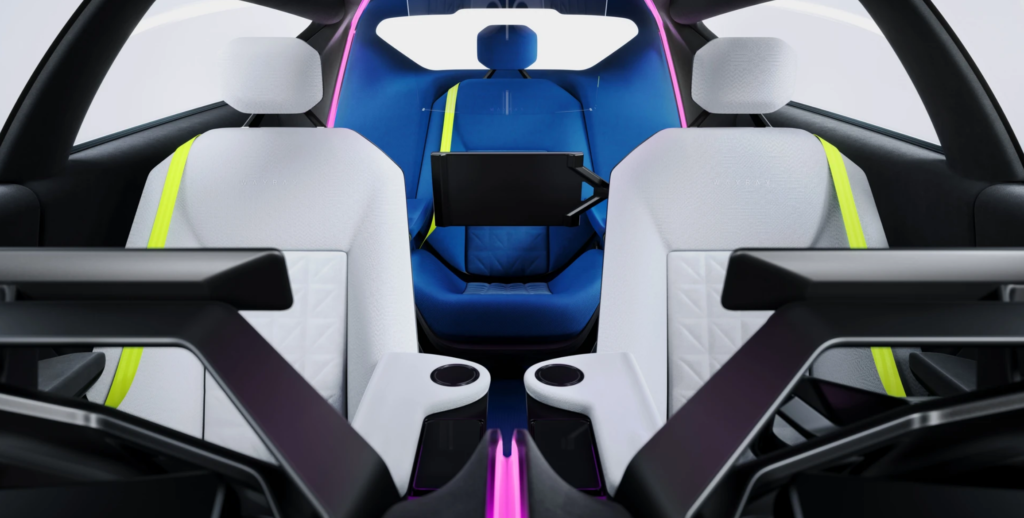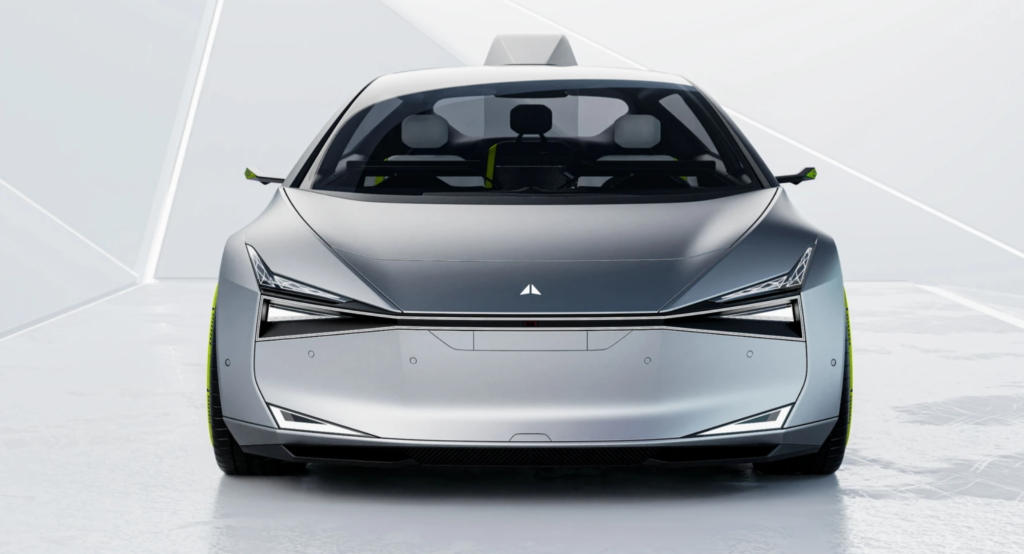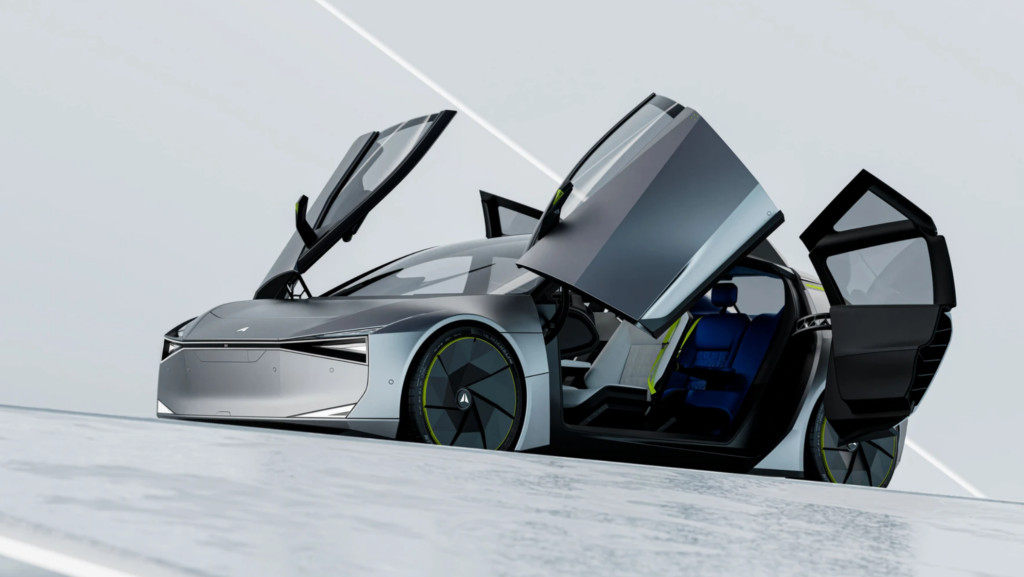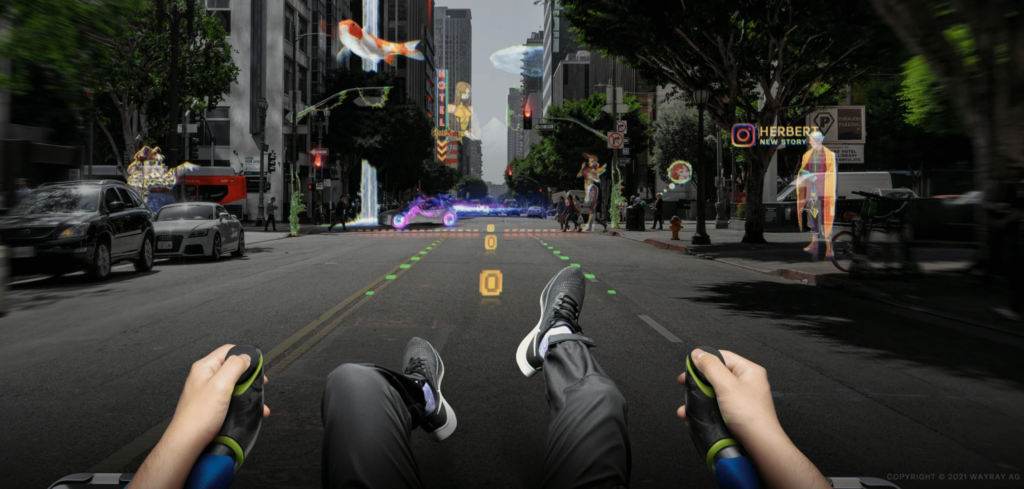Swiss technology company WayRay has unveiled what it says is the world’s first car to incorporate holographic, augmented reality glazing – the Holograktor. The innovation is designed around the company’s True AR technology and intended to operate with WayRay’s new ride-hailing business model. The system’s USP is its ability to render augmented reality scenes around the vehicle in real time, displayed via holographic projections.
Backed by early investments from companies like Porsche, Hyundai and Alibaba, WayRay says it is using the car to emerge from its ‘deep tech’ automotive supplier status to become a player in the world of new mobility models.
The three-seat vehicle has been conceived specifically for ride hailing and can be driven conventionally or by remote control, in the latter case via a 5G and satellite connection to a qualified driver. Its unusual single rear seat ‘throne’ layout was inspired by data showing that more than 80% of Uber trips were for one person only. “The idea is that you can choose Uber Black, Uber SUV or Uber Holograktor. And if you choose the Holograktor, your ride will be subsidized by sponsored content so that the price will be much lower,” said WayRay founder and CEO, Vitaly Ponomarev.
The car was also designed to showcase the company’s holographic technology. Passengers will have access to several holographic HUDs in the front and on the side of the vehicle, with each seat fitted with joysticks for gaming and interacting with the content. The holographic system for the rear passenger is housed in a box on the vehicle roof, dubbed the Shrimp, while the front system is integrated into the dashboard. The displays have a much wider field of view than traditional head-up displays. The company also notes that as its system does not rely on mirrors, the displays provide a bright image and can operate in direct sunlight.
The interior has been designed around a 2+1 seating arrangement, with the front seats far apart to provide all three occupants with a clear view of the holographic displays. Thanks to the vehicle’s ability to be driven remotely by a qualified driver using the car’s cameras, radar, mapping and sensor suites, the steering wheel is not always required and can be stowed in the dashboard.
Sasha Selipanov, head of design at Raw Design House and chief designer on the Holograktor project, said, “We have seen a few innovative concepts of how steering wheels can fold away out of view, but we didn’t want to come up with something ridiculous just for the sake of it. The reason is simple: ultimately, there will be an airbag there, and the airbag should remain deployable. Safety is first and foremost, and that brings with it a certain sense of realism. We always had a production car as our goal.”
